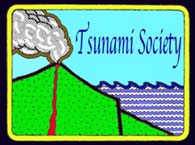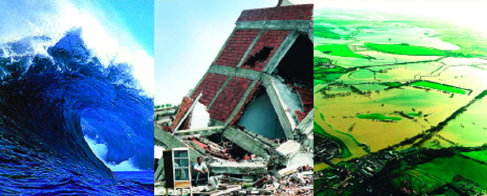|

SCIENCE OF
TSUNAMI HAZARDS
The International Journal of the Tsunami Society

|
Tsunami
Society International
International Journal
SCIENCE OF TSUNAMI HAZARDS
ISSUES - Year 2014
ISSN 8755-6839
..........................................................
ABSTRACTS
for Volume 33, No. 1
ABSTRACTS for Vol 33, No. 1, 2014
Complete Journal - January 2014 - STHVol33N1Y2014( 4.9 MB )
A SURVEY ON TIDAL ANALYSIS AND FORECASTING METHODS FOR TSUNAMI DETECTION
Sergio Consoli - European Commission Joint Research Centre, Institute for the Protection and Security of the Citizen, Via Enrico Fermi 2749, TP 680, 21027 Ispra (VA), ITALY
Diego Reforgiato Recupero - National Research Council (CNR), Institute of Cognitive Sciences and Technologies, Via Gaifami 18 - 95028 Catania / R2M Solution,
Via Monte S.Agata 16, 95100, Catania (CT) ITALY
Vanni Zavarella - European Commission Joint Research Centre, Institute for the Protection and Security of the Citizen, Via Enrico Fermi 2749, TP 680, 21027 Ispra (VA), ITALY
ABSTRACT
Accurate analysis and forecasting of tidal level are very important tasks for human activities in oceanic and coastal areas. They can be crucial in catastrophic situations like occurrences of Tsunamis in order to provide a rapid alerting to the human population involved and to save lives. Conventional tidal forecasting methods are based on harmonic analysis using the least squares method to determine harmonic parameters. However, a large number of parameters and long-term measured data are required for precise tidal level predictions with harmonic analysis. Furthermore, traditional harmonic methods rely on models based on the analysis of astronomical components and they can be inadequate when the contribution of non-astronomical components, such as the weather, is significant. Other alternative approaches have been developed in the literature in order to deal with these situations and provide predictions with the desired accuracy, with respect also to the length of the available tidal record. These methods include standard high or band pass filtering techniques, although the relatively deterministic character and large amplitude of tidal signals make special techniques, like artificial neural networks and wavelets transform analysis methods, more effective. This paper is intended to provide the communities of both researchers and practitioners with a broadly applicable, up to date coverage of tidal analysis and forecasting methodologies that have proven to be successful in a variety of circumstances, and that hold particular promise for success in the future. Classical and novel methods are reviewed in a systematic and consistent way, outlining their main concepts and components, similarities and differences, advantages and disadvantages.
FIRST EVIDENCE OF PALEO-TSUNAMI DEPOSITS OF A MAJOR HISTORIC EVENT IN ECUADOR
Kervin Chunga - Escuela de Ciencias Geológicas y Ambientales, Facultad de Ciencias Naturales, Universidad de Guayaquil, ECUADOR
Theofilos Toulkeridis - Universidad de las Fuerzas Armadas - ESPE, Campus Sangolquí, Sangolquí, ECUADOR
ABSTRACT
The Ecuadorian shoreline is considered highly susceptible by impacts of tsunamis triggered by marine quakes or submarine landslides occurring close or nearby the subduction zone between the Nazca, Caribbean and South American plates. Since 1877 one dozen known tsunamis have been witnessed along this coast, mostly related to short-distanced seismic activities (earthquakes between Mw 6.9 to 8.8). However, no evidence of these impacts has been recorded in the sedimentary stratigraphy on the Ecuadorian platform so far. Nonetheless, in the southwestern part of the Gulf of Guayaquil, due to a biological, chemical, stratigraphic and geochronologic study of a few cored samples an anomalous horizon to the other sedimentary layers has been identified and recognized as a paleo-tsunami deposit. This layer having a thickness of up to 10 cm and up to 1100 meters away from the actual shore, demonstrates various criteria which confirm its origin such as deep sea foraminifera like Pullenia bulloides, run-up and backwash features, fragments of molluscs, which are absent in other sedimentary levels, matrix of weathered chlorite potentially originated by glauconite besides other. Geocronologic evidence together with the calculated sedimentation rate, implies that a the tsunami surged the coastal lowlands around Villamil Playas about 1250 ± 50 yrs ago and must have been a major event originated from the western or northwestern direction.
Keywords: Paleo-tsunami deposit, sedimentary facies, Gulf of Guayaquil
MASS MEDIA ROLE IN PROMOTION OF EDUCATION, AWARENESS AND SUSTAINABLE PREPAREDNESS FOR TSUNAMIS AND OTHER MARINE HAZARDS
George Pararas-Carayannis - Tsunami Society International, Honolulu, Hawaii, USA
ABSTRACT
Several mega-tsunamis in the last decade have caused unprecedented deaths and destruction in many countries bordering the Pacific and Indian Oceans. Many other areas in the Atlantic Ocean and in the Caribbean and Mediterranean Seas remain highly vulnerable to future destructive events. To this day the entire world is still feeling the effects of the great tsunamis of 2011, 2010 and 2004. The combined impacts of tsunamis and of collateral hazards have caused hundreds of thousands of deaths and billions of dollars in damages. As a result, much attention has been given to planning for future tsunamis and for the collateral impacts of landslides, fires, hazardous material spills and nuclear plant accidents. In spite of the great attention that has been given, many regions of the world still remain unprepared and are highly vulnerable if similar disasters strike again. However, mass media can play a very important role in creating continuous awareness of potential threats and in achieving effective preparedness for tsunami and other marine hazards and thus minimize future losses of lives and destruction of property. Media contributions could include frequent educational programs, as well as anniversary tributes for the thousands of victims of the recent tsunamis. Such educational and commemorative programs, if repeated with frequency, will have significant long-term benefits for all the areas devastated in the past, would help enhance to a greater extent awareness and preparedness, but would also serve as paradigms in mitigating the future impact of tsunamis and other marine disasters. A multi media approach could be used in providing products for such Tributes – perhaps to be repeated annually and to serve as constant reminders of future potential disasters and of the need for adequate preparedness. Such effort could include photojournalistic exhibitions, picture handbooks and radio documentaries on disaster management. Multi media products – when completed - should receive distribution throughout the potential vulnerable areas, but particularly in the South East Asia region. Countries that would particularly benefit from mass media efforts would include the most vulnerable countries, specifically: Japan, Philippines, Indonesia, Thailand, India, Bangladesh, Malaysia, Myanmar, Sri Lanka, Yemen, Oman, Maldives, Kenya, Tanzania, Seychelles and South Africa. In summary, this presentation provides strategies, guidelines and integrating programs that mass media can employ to help ensure that local actions are taken that would enhance marine disaster education and of factors related to preparedness, overall resiliency and post-disaster recovery.
Copyright © 2014 - TSUNAMI SOCIETY INTERNATIONAL
______________________________________________________________________________________________________
All Issues of Science of Tsunami Hazards prior to 2006 are also available in pdf format at mirror site
http://epubs.lanl.gov/tsunami/
------------------------------------------------------------------------
SCIENCE OF
TSUNAMI HAZARDS
Journal of Tsunami Society International
ISSN 8755-6839
Abstracts, full papers and individual volumes
All Past Issues
from 1982 - archived by volume, title and names of authors
_____________________________________
SCIENCE OF TSUNAMI HAZARDS
Journal of Tsunami Society International
Copyright © 1978 - 2014 - TSUNAMI SOCIETY INTERNATIONAL
TSUNAMI SOCIETY INTERNATIONAL, 1741 Ala Moana Blvd. #70, Honolulu, HI 96815, USA.
WWW.TSUNAMISOCIETY.ORG
------------------------------------------------------------------------
All Issues of Science of Tsunami Hazards prior to 2006 are also available in pdf format at mirror site at U.S. Los Alamos National Laboratory
http://epubs.lanl.gov/tsunami/
------------------------------------------------------------------------
| |
|
© 2013 Tsunami Society International- All rights reserved
Last update: January 2014 |
|
|
| |
|
|
|
|
|
|




